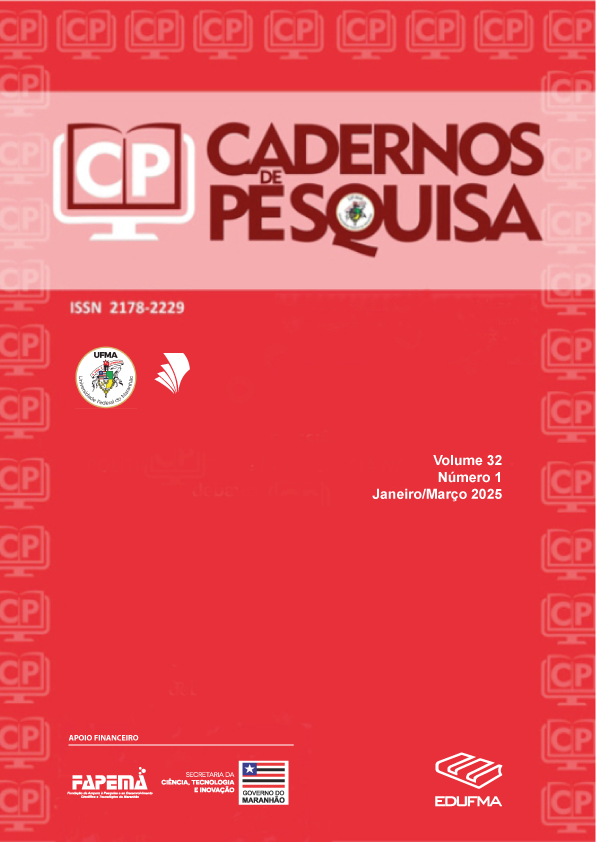L’organizzazione dello spazio scolastico tra disciplinamento anatomico e liberazione del bambino nella scuola primaria italiana (1860-1977)
DOI:
https://doi.org/10.18764/2178-2229v32n1e25690Parole chiave:
scuola primaria, cultura materiale, spazio di apprendimento, disciplina, ItaliaAbstract
Questo contributo – partendo dalla descrizione delle disastrose condizioni materiali delle aule della scuola primaria dopo l’Unità d’Italia – descrive il processo che porta, attraverso l’intensificazione della lotta all’analfabetismo e il conseguente aumento della popolazione scolastica, ad un crescente necessità di
regolamentare gli spazi e introdurre i banchi scolastici. Da questo momento in poi il banco scolastico è stato sottoposto ad un processo di codificazione formale che si è sviluppato tramite la sua produzione industriale da parte di aziende specializzate. Nella prima metà del XX secolo, i banchi scolastici subirono un processo di sclerotizzazione formale che ne ritardò l’adattamento a modelli stranieri più innovativi, sia dal punto di vista funzionale che estetico. Infine, nel secondo dopoguerra, l’emergere di nuovi modelli educativi basati sui principi dell’attivismo pedagogico e il crescente interesse dimostrato da parte dei designers industriali per gli arredi scolastici crearono le condizioni per un profondo rinnovamento degli spazi di apprendimento e un definitivo superamento delle funzioni di disciplinamento anatomico precedentemente attribuite al banco scolastico.
Downloads
Riferimenti bibliografici
ALATRI, G. Uma vida para educar, entre arte e socialidade: Alessandro Marcucci (1876-1968). Unicopli: Milão, 2006.
ALATRI, G.; MAINO, MP. (ed.). Alessandro Marcucci. Disegni e arredi tra Balla e Cambellotti. Catalogo della mostra (Galleria Simone Aleandri Arte Moderna – Roma, 18 ottobre-31 novembre 2015). Edizioni Officine Vereia: Roma, 2015.
BARNI, G. Novo modelo de banco escolar portátil. Bemporad: Florença, 1925.
BENCI, P. A carteira escolar na escola primária. Tipografia Salvini: Florença, 1912.
CAPPELLETTI, G. School Architecture and Furniture in Italy, 1950-1970. In: Paciaroni, L. The School and Its Many Pasts: The Different Types of School Memory. EUM: Macerata, 2024, pp. 181-190.
CASCIANI, S. Casciani, S., Arte industriale: gioco oggetto pensiero. Danese e la sua produzione. Arcadia: Milano, 1988.
CERULLO, C; LONGONI, M; ZANUTTINI, R. Legno-sughero-arredo: guida alla normativa tecnica. Lampi di Stampa: Milano, 2004, pp. 245-247.
DÁVILA BALSERA, P.; NAYA GARMENDIA, L. M. La “señal”, um objeto da escola disciplinada e da pedagogia do silêncio. Cabás, n. 30, 2023, p. 19-36.
DE GIORGI, F., Il banco di scuola. In: Tra banchi e quaderni, Barbieri: Manduria, 2005, pp. 13-16 (cit. p. 13).
DE GIORGI, F. Appunti sulla storia del banco scolastico. Rivista di Storia dell’Educazione, n. 1, 2014, pp. 85-98.
DI BIASIO, S. Da “sedere compostamente” a “stare comodamente”: l’esperienza delle scuole dell’Agro Romano e Pontino come laboratorio sulla storia del banco scolastico. In: ASCENZI, A.; COVATO, C.; ZAGO, G. (eds.). Il patrimonio storico-educativo come risorsa per il rinnovamento della didattica scolastica e universitaria: esperienze e prospettive, Eum: Macerata, 2021, pp. 465-478.
DUSSEL, I., CARUSO, M. A invenção da sala de aula: Uma genealogia das formas de ensino. Santillana: Buenos Aires, 1999.
FENAROLI, G.E., Palini Legno. Protagonista indiscussa dell’arredo scolastico nel ’900. Auser Cultura Edizioni: Pisogne, 2023.
FOUCAULT, M. Sorvegliare e punire: nascita della prigione. Einaudi: Turim, 1976.
LATINO, E., Le malattie della scuola e la riforma igienica degli arredi scolastici. Paravia: Torino, 1884, pp. 25-26.
LODI, M. C’è speranza se questo accade al Vho. Edizioni Avanti!: Milão, 1963.
LODI, M. Il paese sbagliato. Einaudi: Torino, 1970, p. 21.
MAINO, M. P. A misura di bambino: cent’anni di mobili per l’infanzia in Italia, 1870-1970. Laterza: Roma-Bari, 2003.
MARCARINI, M. Gli spazi della scuola: le proposte rivoluzionarie dell’attivismo nell’organizzazione degli spazi educativi e le ricadute successive. Formazione, Lavoro, Persona (revista digital), v. 4, n. 10, abr., 2014, pp. 143-165.
MAURER; D. Il design per la scuola. In: FERRARI; M. (ed.). Di ogni ordine e grado: l’architettura della scuola. Rubbettino: Soveria Mannelli, 2015, p. 75-85.
MEDA, J. Mezzi di educazione di massa. Saggi di storia della cultura materiale della scuola tra XIX e XX secolo. FrancoAngeli: Milão, 2016.
MEDA, J.; POLENGHI, S. The Impossible Schools: Rural Classrooms in the Paintings of Italian Artists during the Second Half of the Nineteenth Century. In: COMAS RUBÍ, X.; PRIEM, K.; GONZÁLEZ GÓMEZ, S. (eds.). Media Matter: Images as Presenters, Mediators, and Means of Observation. De Gruyter: Berlin, 2021, pp. 203-224.
MEDA, J. Génesis y evolución de los materiales escolares en Italia a finales del siglo XIX. In: Escolano Benito, A.; CAMPOS ALVA, E.L. Cultura escolar y patrimonio histórico educativo México-España. Sociedad Mexicana de Historia de la Educación: México, 2022, pp. 367-389.
MEDA, J.; PACIARONi, L. Miedo y vergüenza: breve historia de dos emociones escolares (Italia, siglo XX). In: PIMENTA ROCHA, H.H.; TORO BLANCO, P. Infância, juventude e emoções na história da educação. Fino Traço: Belo Horizonte, 2022b, p. 167-199.
MEDA, J.; PACIARONI, L.; SANI R. (eds.). The School and Its Many pasts, 2024a. Disponível em: https://eum.unimc.it/it/catalogo/857-the-school-and-its-many-pasts
MEDA, J. Mario Lodi, il maestro che cominciava dai bambini. In: SILVESTRI, L.; DI BIASIO S. (eds.). Maestre e maestri della ricostruzione. Una nuova scuola nell’Italia tra dopoguerra e boom economico, Mondadori: Milão 2024b, pp. 139-163.
MENEGUZZO, M. Bruno Munari. Laterza: Bari, 1993.
MONTESSORI, M., Il metodo della pedagogia scientifica applicato all’educazione infantile nelle Case dei Bambini. Lapi: Città di Castello, 1909.
MONTESSORI, M. La costruzione della personalità attraverso l’organizzazione dei movimenti. Montessori, n. 6, nov./dez.1932, pp. 323-329.
ORENGO, E., Dell’edifizio scolastico, dell’arredamento e del banco in particolare, Tipografia De Maria: Torino, 1877.
TOSCANI, X. Alfabetismo e scolarizzazione dall’Unità alla Guerra mondiale, In: PAZZAGLIA, L. (ed.), Cattolici, educazione e trasformazioni socioculturali in Italia tra Otto e Novecento. La Scuola: Brescia, 1999, pp. 283-340.
VERSTRAETE, P. Lessons in Silence: Power, Diversity and the Educationalisation of Silence. DiGeSt. Journal of Diversity and Gender Studies, v. 3, n. 2, 2016, pp. 59-74.
VERSTRAETE, P. The silent child: Reform pedagogy, the self and the problematization of shyness in the classroom. Historia y Memoria de la Educación, n. 15, 2022, pp. 297-321.
##submission.downloads##
Pubblicato
Come citare
Fascicolo
Sezione
Licenza

TQuesto lavoro è fornito con la licenza Creative Commons Attribuzione 4.0 Internazionale.
A Cadernos de Pesquisa está licenciada com a Licença Creative Commons Atribuição 4.0 Internacional.



















